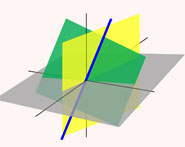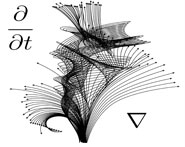


 تاريخ الرياضيات
تاريخ الرياضيات
 الرياضيات في الحضارات المختلفة
الرياضيات في الحضارات المختلفة 
 الرياضيات المتقطعة
الرياضيات المتقطعة
 الجبر
الجبر
 الهندسة
الهندسة 
 المعادلات التفاضلية و التكاملية
المعادلات التفاضلية و التكاملية 
 التحليل
التحليل
 علماء الرياضيات
علماء الرياضيات |
Read More
Date: 13-5-2022
Date: 27-2-2022
Date: 10-3-2022
|
The happy end problem, also called the "happy ending problem," is the problem of determining for 




Since three noncollinear points always determine a triangle, 
Random arrangements of 


Random arrangements of 


As the number of points 








Erdős and Szekeres (1935) showed that 
 |
(1) |
where 


 |
(2) |
by Chung and Graham (1998), 
 |
(3) |
by Kleitman and Pachter (1998), and 
 |
(4) |
by Tóth and Valtr (1998). For 
The values of 

Borwein, J. and Bailey, D. Mathematics by Experiment: Plausible Reasoning in the 21st Century. Wellesley, MA: A K Peters, p. 78, 2003.
Chung, F. R. K. and Graham, R. L. "Forced Convex 
Erdős, P. and Szekeres, G. "A Combinatorial Problem in Geometry." Compositio Math. 2, 463-470, 1935.
Hoffman, P. The Man Who Loved Only Numbers: The Story of Paul Erdős and the Search for Mathematical Truth. New York: Hyperion, pp. 75-78, 1998.
Kleitman, D. and Pachter, L. "Finding Convex Sets among Points in the Plane." Discr. Comput. Geom. 19, 405-410, 1998.
Lovász, L.; Pelikán, J.; and Vesztergombi, K. Discrete Mathematics, Elementary and Beyond. New York: Springer-Verlag, 2003.
Sloane, N. J. A. Sequence A052473 in "The On-Line Encyclopedia of Integer Sequences."Szekeres, G. and Peters, L. "Computer Solution to the 17-Point Erdős-Szekeres Problem." ANZIAM J. 48, 151-164, 2006.
Tóth, G. and Valtr, P. "Note on the Erdős-Szekeres Theorem." Discr. Comput. Geom. 19, 457-459, 199



|
|
|
|
التوتر والسرطان.. علماء يحذرون من "صلة خطيرة"
|
|
|
|
|
|
|
مرآة السيارة: مدى دقة عكسها للصورة الصحيحة
|
|
|
|
|
|
|
نحو شراكة وطنية متكاملة.. الأمين العام للعتبة الحسينية يبحث مع وكيل وزارة الخارجية آفاق التعاون المؤسسي
|
|
|